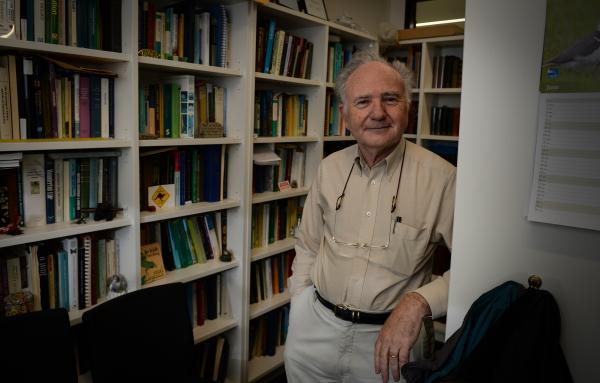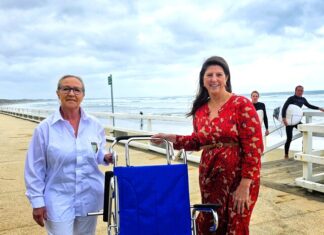
By NOEL MURPHY
YOU’VE seen how effective invisible warriors can be in movies such as Arnie Schwarzenegger’s Predator but is it really possible to camouflage soldiers, or weapons such as fighter planes, so they’re effectively invisible?
Deakin University’s Professor John Endler doesn’t want to get ahead of himself but work he and other researchers are doing with poison dart frogs might be the start of something seriously big in the defence game.
He’s not the only one at Deakin breaking new ground in the search for invisibility, either.
Associate Professor Tiffany Walsh, working with the peculiar light characteristics of mother-of-pearl might be onto something that could shield jet fighters.
Yep, it all sounds a little like Harry Potter wizardry but the bright coloured patterns of frogs and the 3D molecular makeup of abalone shells — with their nano-engineering possibilities – might be just what the generals ordered.
Prof Endler has found his frogs, with rainbow hues to warn they are toxic — or with colourings that make them hard to see – adjust their behaviour, basically their movements, to capitalise on their built-in defences.
“We found that some frogs move frequently in the same direction while others moved randomly, and that this movement behaviour variation corresponded to the colour patterns,” Prof Endler said.
“The frogs with elongated patterns moved continuously in the same direction to create an illusion of static pattern, or a pattern travelling at a slower speed, to thwart predators attempting to track their trajectory.
“But frogs which moved randomly and changed directions frequently, rely on interrupted colour patterns that appear visually disruptive and hard to see at a distance, giving them an advantage in predator detection rather than tracking.
“These findings are quite exciting as we believe they might have application in the human world for defence camouflage.
“It’s pure speculation about defence applications for it but I suppose a fast-moving gadget for spying on someone, if it had horizontal stripes on it, might be effective.”
Assoc Prof Walsh is on the same but further advanced, already working with the US Air Force looking at manipulating light so that aircraft might be rendered effectively invisible to the enemy.
“It’s pretty ambitious and just one application this technology could potentially be used for,” Associate Professor Walsh said earlier this year.
“The US Air Force made a call for proposals to make 3D assemblies of nanoparticles using bio-molecules and one potential outcome would be light bending.
“Another is photonic circuitry to carry electricity using beams of light instead of wires, exerting our technology to make it bend around corners.”







